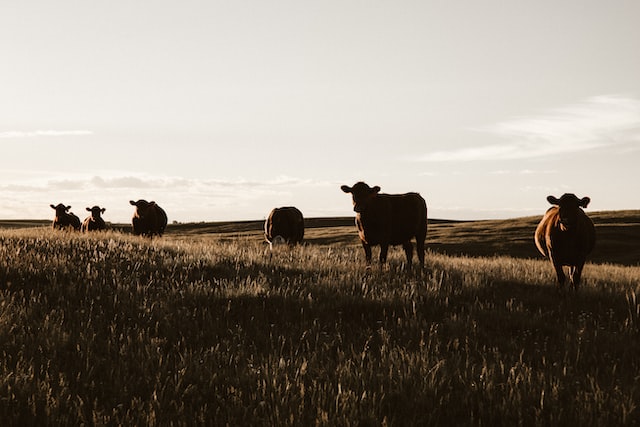Bill Gates Collecting Huge Amounts of Farmland While Pushing Americans Toward “Synthetic Meat”: Why?
Guest Post by Cameron Keegan

According to the co-founder of Microsoft, we must abandon real meat and, instead, eat meat-representing alternatives grown in bioreactors to save the planet
William Henry Gates III, better known as Bill Gates, recently won a legal approval to buy around 2,100 acres of North Dakota farmland valued at $13.5 million. According to the 2021 edition of the Land Report 100, he is considered the largest private owner of farmland in America with now over 270,000 acres. At the same time, Gates has been advocating for developed nations to consume “synthetic meat” to fight climate change.
Meanwhile, a congressman from South Dakota is demanding that Gates explain his farmland purchases. Understandably, many will question the motivations of one of the world’s wealthiest business magnates with an estimated net worth of $110 billion.
So let’s explore Gates’ appetite for buying up so much U.S. farmland and pushing for the consumption of “meat” that isn’t meat.
Diversification of investments
From its earliest inception, Cascade Investment focused on blue chip defensive stocks—large companies with solid brands and consistent earnings—including Four Seasons Hotels and Resorts, Coca-Cola and investor Warren Buffett’s Berkshire Hathaway. Gates and Buffett are close friends, and Cascade Investment embraced Buffet’s approach to holding stocks long-term for handsome returns.
While Gates worked on diversifying his portfolio, he also established the Bill & Melinda Gates Foundation (BMGF) with his then-wife in 2000, merging the William H. Gates Foundation and the Gates Learning Foundation. Buffet has also served on the trustee board, which has since grown to hold nearly $70 billion in investable assets.
According to the BMGF website, the foundation’s role, mainly aiming at developing countries, is to “give every person a chance at a healthy, productive life.” Moreover, the foundation’s work “depends on grantees and partners across the United States and in more than 130 countries who have on-the-ground expertise, a deep understanding of the issues we care about.
One way or another, the BMGF has never shied away from making the headlines.
In 2009, the Program for Appropriate Technology in Health (PATH), a Seattle-based non-government organization, launched a $3.6 million Human Papillomavirus (HPV) vaccine trial funded by the BMGF. Around 25,000 Indian girls aged 10 to 14 in tribal communities were involved in the study. Yet, the Indian government terminated the project after several months when news outlets reported the deaths of seven girls.
The Parliament of India released a report in 2013 condemning PATH for “irregularities and discrepancies” in the study; it asserted that “the safety and rights of the children in this vaccination project were highly compromised and violated.” PATH had failed to obtain the proper informed consent from the participants’ parents.
For Gates, it was business as usual. In a 2019 Wall Street Journal article, he wrote that a $10 billion investment into vaccine technology was the “best investment” he had ever made. That same month, Gates echoed the success of his decision-making from the World Economic Forum in Davos, Switzerland: “We feel there’s been over a 20-to-1 return,” yielding $200 billion over the last twenty years.
Indeed, let us not forget Event 201, a simulation about a coronavirus pandemic just months before the reported outbreak of COVID-19, hosted by Johns Hopkins Center for Health Security in partnership with the World Economic Forum and the BMGF. Then, in December 2020, the BMGF announced a $250 million commitment, building upon the foundation’s total investment of $1.75 billion toward fighting the COVID-19 pandemic through vaccine development and distribution.
Motivation for purchasing farmland
This article has been archived for your research. The original version from The Burning Platform can be found here.


